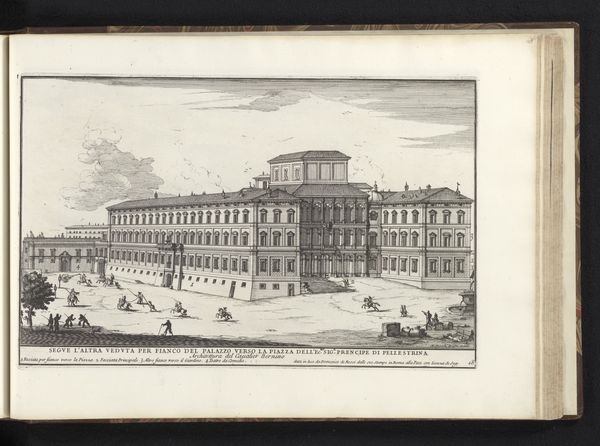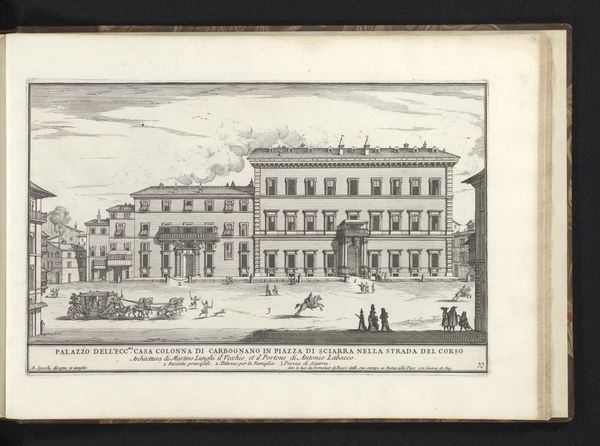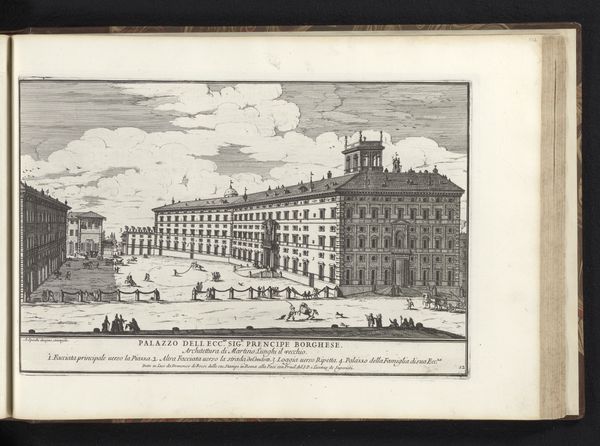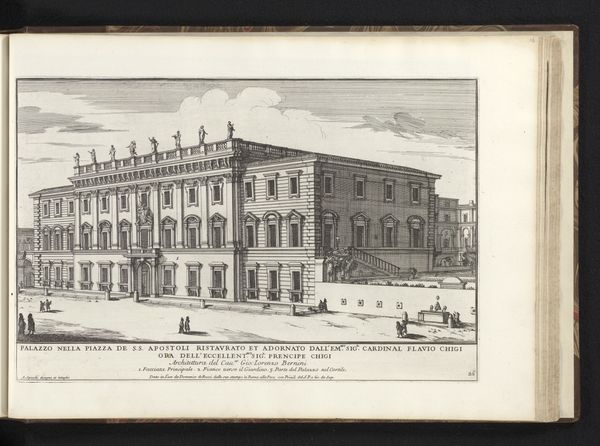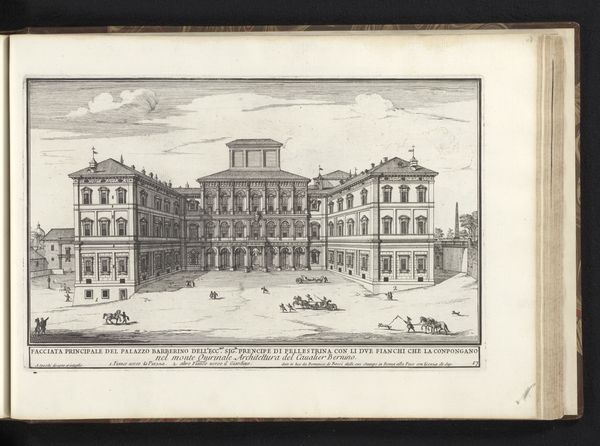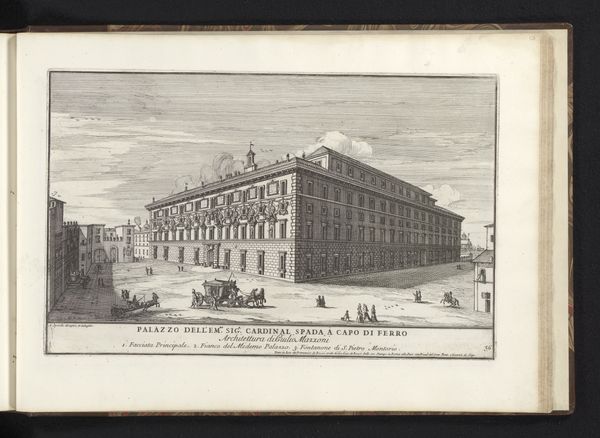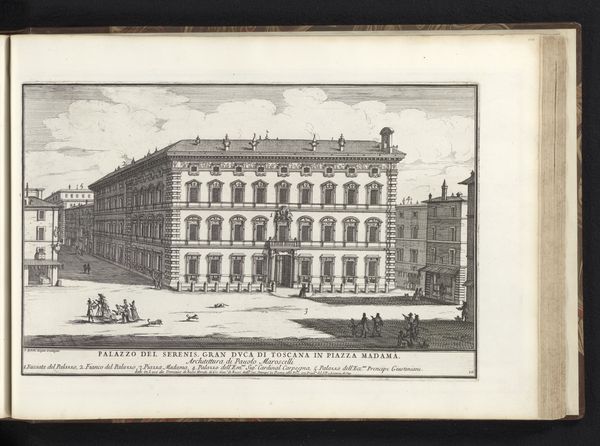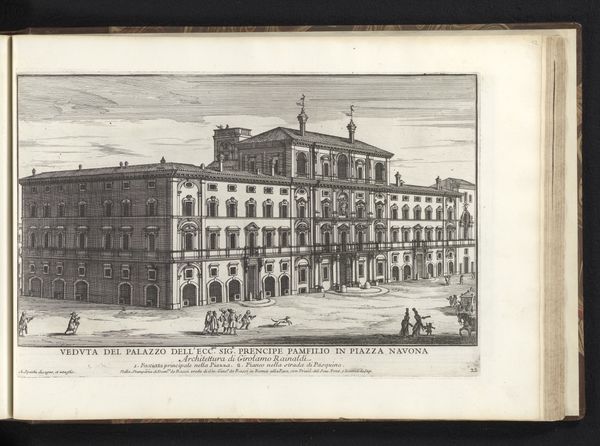
print, engraving, architecture
#
baroque
# print
#
form
#
line
#
cityscape
#
engraving
#
architecture
#
realism
Dimensions: height 220 mm, width 332 mm
Copyright: Rijks Museum: Open Domain
Curator: Oh, wow, it feels incredibly precise. The etching work is astounding in its detail. So clinical! Is it meant to celebrate architectural vision or...document it almost forensically? Editor: This is "Palazzo Salviati alla Lungara," an engraving by Alessandro Specchi, dating back to 1699. What strikes me is how it captures a moment when urban development itself was a form of political statement. Here, we're not just seeing a building, but Rome itself being reshaped. Curator: Politically charged floorplans! That's intriguing, it feels almost impossible in our context today...Do you think there's any play of reality in the depiction, like embellishment of how populated this square actually was? The scattering of tiny human figures and horses…it looks a touch idyllic. Editor: These cityscapes served as powerful marketing tools, projecting an image of Roman grandeur. Note the facade, rendered with unwavering accuracy. Each window, column, and balustrade contributes to a calculated image of power. The artist really commits to selling a very specific picture. Curator: You know, thinking about it now... I find a strange beauty in its rigidity. It’s a blueprint come to life. Like gazing into the mind of someone obsessed with order, which is probably what you needed in the Baroque period? Editor: Exactly. The Salviati Palace would have stood as a very visual embodiment of the family's status and influence within Roman society. This print ensures the building’s magnificence can be circulated and appreciated even by those who never set foot in Rome. Curator: Almost like influencer marketing of the Baroque, social climbing through engraving... Now I’m starting to imagine all the backroom deals that must’ve led to the palace getting built in the first place. Makes the clean lines feel way less innocent. Editor: Well, it serves as a reminder of the intricate dance between art, power, and the ever-evolving urban landscape. I find this image particularly pertinent in how such visual documents help shape historical narratives and collective memory. Curator: Looking at this work it feels like witnessing not only the façade of a palace, but also of a very tightly controlled version of reality and what it takes to communicate one idea of a patron to the broader public. Editor: Indeed. Each line and shadow are very thoughtfully put in place to speak volumes about 17th-century Roman ambitions.
Comments
No comments
Be the first to comment and join the conversation on the ultimate creative platform.
